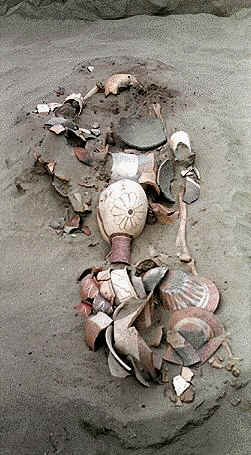
|
|
|
|
|
|
Some Historical Background II
|
Around the same time, Rafael Larco Hoyle, the pioneer of north coast archaeology and to whom we owe much of our understanding of Moche, began his studies. Based on hundreds of tombs that he excavated in the Chicama, Moche and Vir? valleys, Larco established a chronological sequence for the north coast, much more comprehensive than the sequences proposed by his predecessors. It included the early hunters of large, extinct fauna whom he called the Paij?n, followed by Cupisnique, Chav?n (or its influence on the coast), Salinar, Gallinazo, Moche, Huari Epigonal, Chim? and Inca. Based on the stylistic variations he observed in characteristic Moche stirrup spout ceramic vessels, Larco divided the sequence into five cultural phases. Ceramics from the first two phases (first century B.C. to first century A.D.) are very similar to the forms of earlier ceramic vessels —especially those of Cupisnique— and mark the establishment of the Moche culture. According to Larco this early phase included the Moche and Chicama valleys, which he considered the birthplace of the Moche culture. He believed that phases III and IV (second to fifth centuries A.D.) corresponded to Moche military expansion, first in the valleys to the south of Moche and then in the valleys to the north. At this time Moche reached its greatest territorial expanse, from Piura in the north to Huarmey in the south. Moche urban settlements in the south, however, have only been recognized as far as the Nepe?a valley (Pa?amarca). Larco viewed phase V (sixth to seventh centuries A.D.) as Moche's decadent phase, marking the end of this culture and the arrival of influences from other societies in the highlands and the central coast. At this time, control shifted north of Moche proper. The old capital at the Huacas of Moche lost power and a new, smaller center was built at Galindo, located at the neck of the Moche valley. |
 |